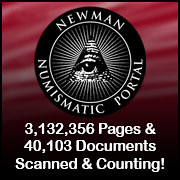
About UsThe Numismatic Bibliomania Society is a non-profit association devoted to the study and enjoyment of numismatic literature. For more information please see our web site at coinbooks.org SubscriptionsThose wishing to become new E-Sylum subscribers (or wishing to Unsubscribe) can go to the following web page link MembershipThere is a membership application available on the web site Membership Application To join, print the application and return it with your check to the address printed on the application. Print/Digital membership is $40 to addresses in the U.S., and $60 elsewhere. A digital-only membership is available for $25. For those without web access, write to: Charles Heck, Treasurer AsylumFor Asylum mailing address changes and other membership questions, contact Chuck at this email address: treasurer@coinbooks.org SubmissionsTo submit items for publication in The E-Sylum, write to the Editor at this address: whomren@gmail.com
BUY THE BOOK BEFORE THE COINSale Calendar
|
- WAYNE'S WORDS: THE E-SYLUM AUGUST 23, 2020
- NBS AUCTION AND GENERAL MEETING
- NBS BIBLIOTALK PODCAST INTERVIEWS DAN HAMELBERG
- NEW BOOK: PROVISIONAL COINS OF EL SALVADOR
- 2020 NUMISMATIC LITERARY GUILD AWARD WINNERS
- COIN IMAGING FORMAT: NUTILT
- IN GOD WE TRUST ON U.S. PAPER MONEY
- VIDEO: JERRY COHEN INTERVIEW
- NEW DOCUMENTARY: WILL WE STOP MAKING CENTS?
- NOTES FROM E-SYLUM READERS: AUGUST 23, 2020
- MORE ON DONALD GROVES PARTRICK
- AN ENGRAVED CIVIL WAR ID DISC
- PORTRAITS OF MINT DIRECTOR ROBERT PATTERSON
- ON NEARLY ALL-MALE NUMISMATIC EVENTS
- THE HISTORY OF THE FREEDMAN’S BANK
- VOCABULARY TERMS: MOLD, MOLDING
- RIGHT REVEREND EDMOND MARIE OBRECHT (1852-1935)
- GEORGE BUSH COIN DESIGNER ELANA HAGLER
- ANCIENT COINS IN EARLY AMERICAN AUCTIONS
- DAVISSON'S E-AUCTION 36 ANCIENTS
- ROBINSON ANCIENT COIN SALE 113 SELECTIONS
- CLASSICAL NUMISMATIC GROUP SALE 115 ANNOUNCED
- MORE HOLABIRD AUGUST 2020 SALE SELECTIONS
- NUMISMATIC NUGGETS: AUGUST 23, 2020
- COIN CASTING AT COLONIAL WILLIAMSBURG
- THE HEATON MINT SERIES OF CHINESE COINS
- THE HISTORY OF HOBO NICKELS
- DO WE CALL THEM SO-CALLED DIMES?
- AN ESSAY ON GAMING COUNTERS
- UTAH'S GOLDBACK ALTERNATIVE CURRENCY
- LOOSE CHANGE: AUGUST 23, 2020
- MR. SQUIRREL'S TIME-TRAVELING COIN ENVELOPES
Click here to access the complete archive
Click here to unsubscribe (scroll down)
To comment or submit articles, reply to whomren@gmail.com
Content presented in The E-Sylum is not necessarily researched or independently fact-checked, and views expressed do not necessarily represent those of the Numismatic Bibliomania Society.
WAYNE'S WORDS: THE E-SYLUM AUGUST 23, 2020
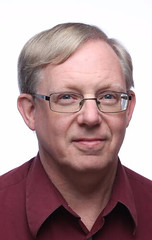 New subscribers this week include:
Larry Hall and
William Nawrocki.
Welcome aboard! We now have 6,550 subscribers.
New subscribers this week include:
Larry Hall and
William Nawrocki.
Welcome aboard! We now have 6,550 subscribers.
Thank you for reading The E-Sylum. If you enjoy it, please send me the email addresses of friends you think may enjoy it as well and I'll send them a subscription. Contact me at whomren@gmail.com anytime regarding your subscription, or questions, comments or suggestions about our content.
This week we open with updates from NBS, one new book, NLG 2020 award winners, updates from the Newman Numismatic Portal, a new documentary, and more.
Other topics this week include the In God We Trust motto, an engraved Civil War ID disc, Mint Director Robert Patterson, the Freedman's Bank, the George H.W. Bush coin designer, ancient coins galore, coin casting, Hobo Nickels, So-Called Dimes, gaming counters, and Goldbacks.
To learn more about numismatic bibliophile Dan Hamelberg, the provisional coins of El Salvador, a new coin image format, dealer Jerry Cohen, collector Don Partrick, an extremely rare pantaleon soter, the Heaton Mint, ancient myths on Roman coins, and Mr Squirrel's time-traveling coin envelopes, read on. Have a great week, everyone!
Wayne Homren
Editor, The E-Sylum
NBS AUCTION AND GENERAL MEETING
REMINDERS! The 2020 Numismatic Bibliomania Society Benefit Auction is open for bidding. Also, the NBS annual General Meeting is coming up on Monday, August 31, 2020. -Editor
Bid on great numismatic literature and donate to the NBS at the same time! This year's NBS Fundraising Auction is entirely by mail bid this year. Download the catalogue and send your bids to df@numislit.com by 6:00PM on Monday, August 31, 2020 and help support numismatic literature.
To View the NBS 2020 Benefit Auction Catalogue
https://www.numislit.com/pdfs/NBSAuction2020.pdf
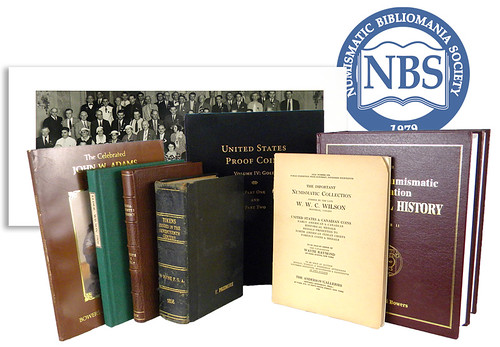
NBS General Meeting August 28
The NBS will be holding our General Meeting during the Newman Numismatic Portal Symposium via Zoom on August 28, 2020 at 11:00AM EDT. Registration includes links to all presentations August 28–29, including those by many NBS members.
To Register for the Symposium:
https://www.eventbrite.com/e/nnp-symposium-2020-registration-107734855854
To Download the Symposium Schedule:
https://drive.google.com/file/d/19GsRYKJ1fQCzpRhuwRxi7dptHGlfd6eH/view?mc_cid=47a3379fde&mc_eid=5362059be6
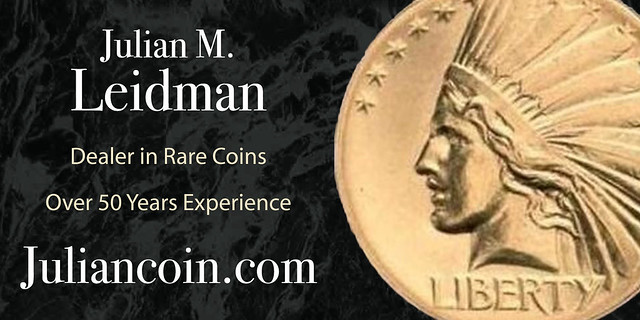
NBS BIBLIOTALK PODCAST INTERVIEWS DAN HAMELBERG
The latest episode of the Numismatic Bibliomania Society podcast is now available for listening. -Editor
NBS Podcast Interviews Dan Hamelberg
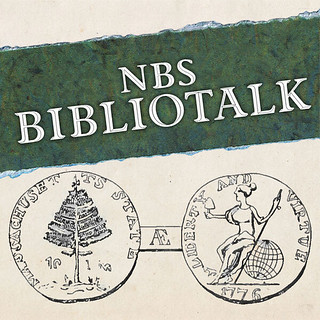 The latest installment of Bibliotalk, the NBS quarterly podcast, has been added to the NBS website (coinbooks.org). Additionally, Bibliotalk may be accessed via other popular podcast platforms such as Spotify, iHeart, and many others.
The latest installment of Bibliotalk, the NBS quarterly podcast, has been added to the NBS website (coinbooks.org). Additionally, Bibliotalk may be accessed via other popular podcast platforms such as Spotify, iHeart, and many others.
In this episode, Lianna Spurrier interviews Dan Hamelberg, book collector extraordinaire. Hamelberg discusses the genesis and formation of his numismatic library, interweaving stories about collecting coins as a child and his current focus on first year of issue U.S. coins. Dan talks about the impact of the Internet on book collecting, along with a few of his favorite items from the library. This is not to be missed – almost as good as spending an hour in the Hamelberg library itself!
NBS is pleased to announce that the frequency of Bibliotalk will move from quarterly to bi-monthly. Feel free to share feedback, or ideas for future episodes with NBS Vice-President Len Augsburger at leonard.augsburger@wustl.edu.
NEW BOOK: PROVISIONAL COINS OF EL SALVADOR
There's a new book in English on the provisional coins of El Salvador in the Central American Federation. Here's the announcement. Congratulations to the authors. -Editor
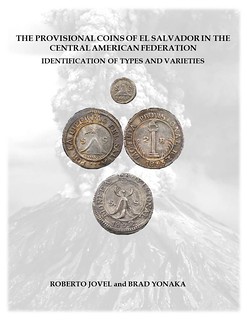 The Provisional Coins of El Salvador in the Central American Federation – Identification of Types
and Varieties
The Provisional Coins of El Salvador in the Central American Federation – Identification of Types
and Varieties
by Roberto Jovel and Brad Yonaka
ISBN: 978-0-9986825-2-5
90 pp. | 8 ½ x 11 inch softbound
This book builds on work previously published by the renowned El Salvadorian numismatist Roberto Jovel, focusing on the provisional silver coins struck by the State of El Salvador during the years 1828-1835, when it was part of the Central American Federation. These crudely made issues were minted in response to severe monetary shortages experienced during the chaotic and economically difficult years of the Federation, and testament to the confrontational and often openly hostile stance that existed between the state government of El Salvador and the Federal government, seated initially in Guatemala. As such, some of these coins are understood to be obsidional (siege) issues, and others as necessity coins given the economic context. The book’s foreword was written by the esteemed numismatist Brian Stickney.
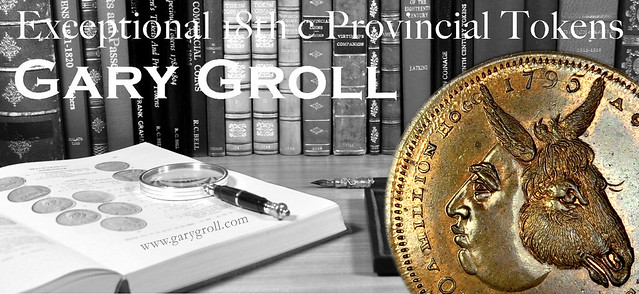
2020 NUMISMATIC LITERARY GUILD AWARD WINNERS
The Numismatic Literary Guild (NLG) is a separate organization from ours, the Numismatic Bibliomania Society (NBS). But we share a love of the numismatic hobby and numismatic research and writing in particular. This NLG press release lists the NLG award winners for 2020. Congratulations to all of the winners, many of whom are E-Sylum and NBS regulars. I've added images of some of the books were announced or reviewed in earlier E-Sylum issues. See the links below for more information about adding these award-winners to your numismatic library. -Editor
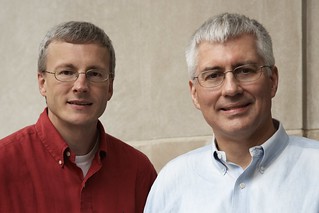 Augsburger and Orosz Selected As 2020
Numismatic Literary Guild Clemy Winners
Augsburger and Orosz Selected As 2020
Numismatic Literary Guild Clemy Winners
Respected researchers and award-winning numismatic authors Len Augsburger and Joel Orosz have received yet another prestigious award. They have been selected as the joint 2020 recipients of The Clemy, the highest honor given by the Numismatic Literary Guild (www.NLGonline.org).
“The Clemy is a coveted, annual award presented in recognition of writing skill, dedication to numismatics, sense of humor and dedication to the Numismatic Literary Guild,” explained NLG Executive Director Ron Guth.
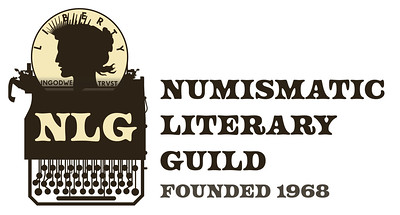
Founded in 1968, the NLG is a nonprofit organization open to any editors, reporters, authors, writers, catalogers, webmasters, bloggers or producers of audio or video involving all forms of money, medals, tokens and other numismatic collectibles. Information about applying for NLG membership is available online at www.NLGonline.org/membership.
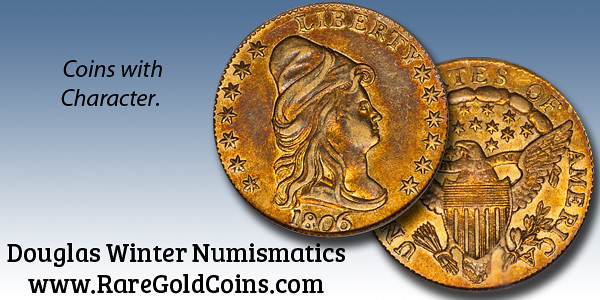
COIN IMAGING FORMAT: NUTILT
On August 20, 2020 the David Lawrence Rare Coins blog announced a new coin image format that's worth a look. -Editor
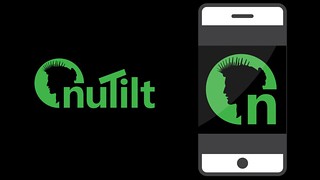 David Lawrence Rare Coins (DLRC) and nuTilt Imaging are excited to introduce a brand-new imaging technology to the hobby of numismatics. NuTilt is a patent-pending process that brings coin imaging to life! The limitation of coin images today is that they are static; nuTilt breaks this barrier, showing how the light catches all areas of a coin just like it does when you tilt it in your palm.
David Lawrence Rare Coins (DLRC) and nuTilt Imaging are excited to introduce a brand-new imaging technology to the hobby of numismatics. NuTilt is a patent-pending process that brings coin imaging to life! The limitation of coin images today is that they are static; nuTilt breaks this barrier, showing how the light catches all areas of a coin just like it does when you tilt it in your palm.
According to John Brush, President of DLRC, “In a world where static images can only go so far, the next frontier in imaging technology is to experience the look of a coin as if it is in your hand. Between the coin industry adjusting to life without large gatherings, and the cultural expansion of interest in digital immersion, this seemed like the perfect opportunity to fill a need for the hobby while modernizing the art of collecting.” Brush continues, “As a service to collectors, adding nuTilt to the DLRC website was a no-brainer.”
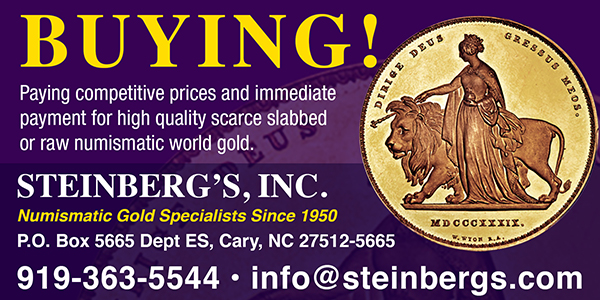
IN GOD WE TRUST ON U.S. PAPER MONEY
The latest addition to the Newman Numismatic Portal is a Chase Manhattan Bank Museum pamphlet on the In God We Trust motto. Project Coordinator Len Augsburger provided the following report. -Editor
In God We Trust on U.S. Paper Money
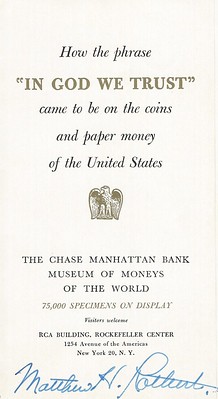 The demise of bank-operated money museums in the United States (Chase Manhattan, Detroit National, etc.) is a well known phenomenon. This week we present a brochure from the Chase Manhattan Bank Museum of Moneys of the World, which explains how the phrase “In God We Trust” came to appear on U.S. paper money. Remarkably, while the motto was added to coins in 1865, nearly a century elapsed before it was added to paper money.
The demise of bank-operated money museums in the United States (Chase Manhattan, Detroit National, etc.) is a well known phenomenon. This week we present a brochure from the Chase Manhattan Bank Museum of Moneys of the World, which explains how the phrase “In God We Trust” came to appear on U.S. paper money. Remarkably, while the motto was added to coins in 1865, nearly a century elapsed before it was added to paper money.
The Chase Manhattan Bank, c. 1960, exhibited the famous 1861 letter from Rev. Mark Watkinson to Treasury Secretary Salmon Chase urging the U.S. Mint to add “In God We Trust” to the nation’s coinage. Matt Rothert, ANA dignitary, who spearheaded the effort to add “In God We Trust” to paper money, signed this particular example, which originates from the Newman collection. Thanks to Bill Bierly for relating the background of this brochure.
Link to “In God We Trust on U.S. Paper Money” brochure on Newman Portal:
https://nnp.wustl.edu/library/book/587112
VIDEO: JERRY COHEN INTERVIEW
These are selections from the David Lisot Video Library that feature news and personalities from the world of coin collecting. David has been attending coin conventions since 1972 and began videotaping in 1985. The Newman Numismatic Portal now lists all David’s videos on their website at:
https://nnp.wustl.edu/library/multimediadetail/522852
Here's an interview with dealer Jerry Cohen. -Editor
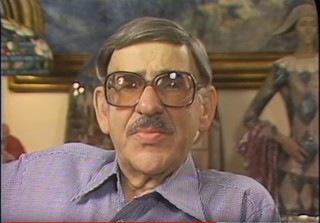 PNG Living History: Jerry Cohen, October 11, 1988.
PNG Living History: Jerry Cohen, October 11, 1988.
VIDEO: 37:35.
Sponsored by the Professional Numismatists Guild.
Another legendary coin dealer is interviewed by David Lisot. David goes to the home of Jerry Cohen in Beverly Hills, California to talk about the early days of numismatics. Jerry talks about Sol Kaplan, Dr. Sheldon, Al Overton, B. Max Mehl, Eric Newman, John Ford, Wayte Raymond, Charlie Green, Aubrey Bebee, Earl Parker, OL Harvey, and Jake Bell along with many more. He talks about seeing eight 1894-S Barber dimes in a dealer's store. He tells tales of 1907 Ultra High Relief $20 gold pieces. Jerry was of part of the formation of the Professional Numismatists Guild and shares the others responsible. He shows a picture of a PNG banquet from the 1950's and names to attendees. Great archival numismatic video!
An excerpt of the video is available for viewing on the Coin Television YouTube Channel at:
https://youtu.be/8K8oSJCoH9o
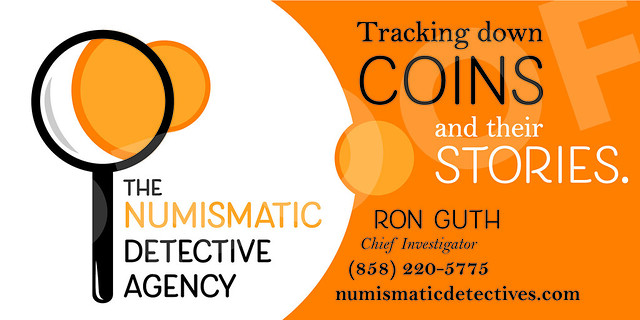
NEW DOCUMENTARY: WILL WE STOP MAKING CENTS?
This Washington Post article describes a new documentary film about the "penny". Dealer Julian Leidman is among the interviewees. -Editor
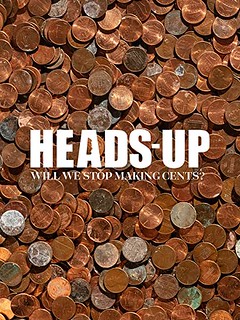 In 2017, wife-and-husband documentary filmmakers Jamie Kovach and Zach Edick embarked on an epic eight-week road trip across North America. Their quarry? The most worthless thing you can find in a cash register or a coin purse: the penny.
In 2017, wife-and-husband documentary filmmakers Jamie Kovach and Zach Edick embarked on an epic eight-week road trip across North America. Their quarry? The most worthless thing you can find in a cash register or a coin purse: the penny.
The result is “Heads-Up: Will We Stop Making Cents?” Their 68-minute documentary is by turns thoughtful and goofy, featuring interviews with everyone from former directors of the U.S. Mint to the tetchy head of a Virginia mail-order vinyl company who was so irritated by local government that he paid the tax on two new vehicles entirely in pennies — five wheelbarrows full.
NOTES FROM E-SYLUM READERS: AUGUST 23, 2020
The Utility of a Penny
On the same topic is this reader note. -Editor
James McNally of Grosse Pointe Farms, MI writes:
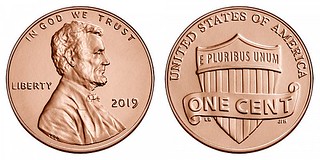 "Regarding the articles about whether the penny will survive the coronavirus, I have always felt that the worth of a cent goes beyond the cost of its manufacture. The focus should be on its utility. A penny is only worth a penny and costs more than a penny to make, but it can be used millions of times as a penny without incurring any additional manufacturing costs. Its utility is more than a penny's worth, and more than the price of manufacturing it.
"Regarding the articles about whether the penny will survive the coronavirus, I have always felt that the worth of a cent goes beyond the cost of its manufacture. The focus should be on its utility. A penny is only worth a penny and costs more than a penny to make, but it can be used millions of times as a penny without incurring any additional manufacturing costs. Its utility is more than a penny's worth, and more than the price of manufacturing it.
"Consider credit cards. It costs money to make and send credit cards to bank customers, but they have absolutely no value as a slab of plastic. Should they stop making them? Of course not - the value of the credit card is not in the plastic but in its utility."
Good point. Thanks! -Editor
Other topics this week include David Lange's Whitman folders book, -Editor
THE BOOK BAZARRE
MORE ON DONALD GROVES PARTRICK
Dave Hirt writes:
"While reading of the passing of Donald Groves Partrick it was mentioned that he was a generous man. I can attest to that. During the time that I was Secretary-Treasurer of the Numismatic Bibliomania Society Groves for several years sent a $100 check for his annual dues which at that time were 10 or 15 dollars. The first time that I received that I was quite surprised. No one had ever done that before. I always remembered his generosity."
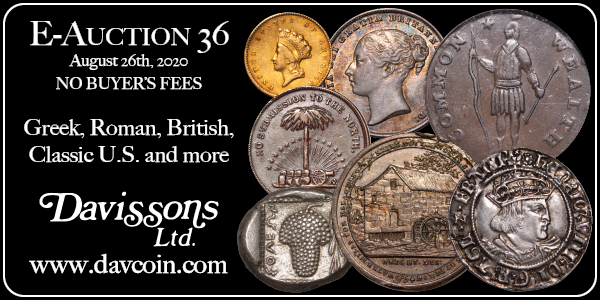
AN ENGRAVED CIVIL WAR ID DISC
Brian Bell of Geoffrey Bell Auctions asked if anyone could help with this new auction acquisition. As it happens my friend Tom Kays has one of these (uninscribed) and he kindly provided the following writeup. -Editor
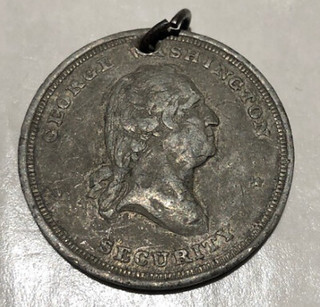
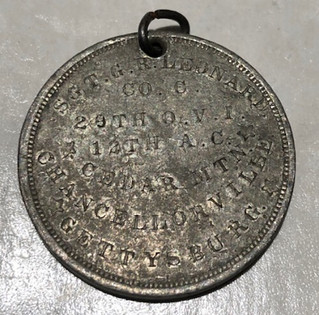
Engraved ID discs are unique items invested with personal history beyond the medal’s generic image and legends. Those owned by a soldier layer military history of the unit the soldier served under on top of typically scant personal history. We may find and can read accounts of what hardships and historic scenes the person wearing the disc must have seen as a member of a fighting unit. Counterfeit ID disks are known but they typically list semi-famous folks killed-in-action, making it hard to refute whether the ID was theirs during the war or a complete fantasy made for collectors of items once owned by famous folks.
This disk is listed in Neil Musante’s Medallic Washington, Volume 1, Page 320., as “GW-262.” The obverse die with George Washington and “SECURITY” was created by Robert Lovett Jr. The obverse die survived long after the Civil War and was used by Thomas Elder as a model for a WW I dog tag that was not adopted by the Army, according to Neil Musante. These artifacts were not called “dog tags” until WW I. The reverse with four stars would be blank until engraved.
PORTRAITS OF MINT DIRECTOR ROBERT PATTERSON
Joel Orosz passed along two posts from the American Philosophical Society blog about portraits of U.S. Mint Director Robert Patterson. Here's an excerpt. Thanks! -Editor
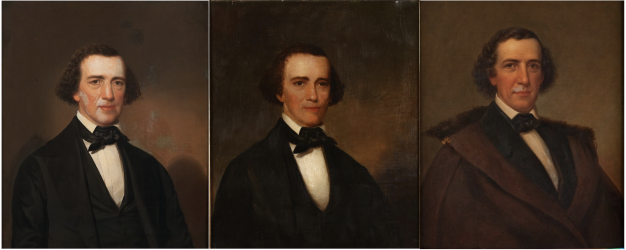
Patterson was a chemist, mathematician, and physicist. He was a professor at both the University of Pennsylvania and at the University of Virginia. He was the sixth director of the U.S. Mint in Philadelphia, belonged to the Academy of Natural Sciences, and helped found both the Franklin Institute and the Musical Fund Society of Philadelphia. He was elected to the APS in 1809, its youngest member to date at age twenty-two, and served as the APS Secretary, Vice President, and finally, as the President (1849-1854). He wrote an early history of the APS in 1842 and the APS also has a collection of his papers and notebooks.
In 1855, shortly after his death, the APS acquired its first portrait of Patterson directly from his wife, Helen. The artist of this portrait was Samuel F. Dubois, Patterson’s nephew. According to family, the portrait was a "likeness, but fails to express the refinement & intelligence of the original." Finding it lacking, they donated it to the APS.
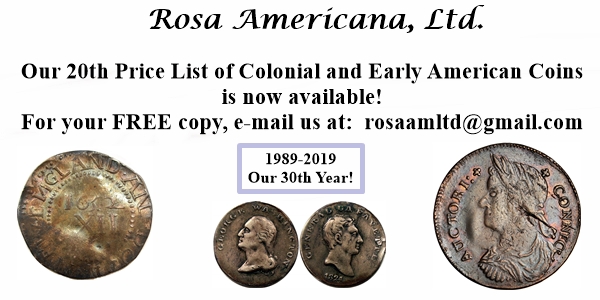
ON NEARLY ALL-MALE NUMISMATIC EVENTS
Former Executive Director of the American Numismatic Society Ute Wartenberg penned a thought-provoking article for the ANS Pocket Change blog this week. We're republishing it here with permission. -Editor
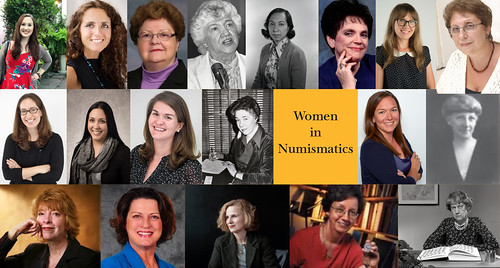
While August means for most people weekends on the beach, long summer days, or just hanging out, numismatists look forward to their annual pilgrimage to some convention center in places such as Rosemont, right next to O’Hare Airport. I refer of course to the annual World’s Fair of Money, hosted by the American Numismatic Association, which was supposed to be in Pittsburgh this year. I have been going to this event for more than two decades, missing only a couple of shows. Over the years, one gets used to the routine: the same hotels, the same Hawaiian shirts that good friends from New York suddenly wear when they show up at the Summer ANA, visiting with numismatic friends. “Visiting with”: that wonderful American, almost untranslatable phrase into English. I really miss our annual show right now.
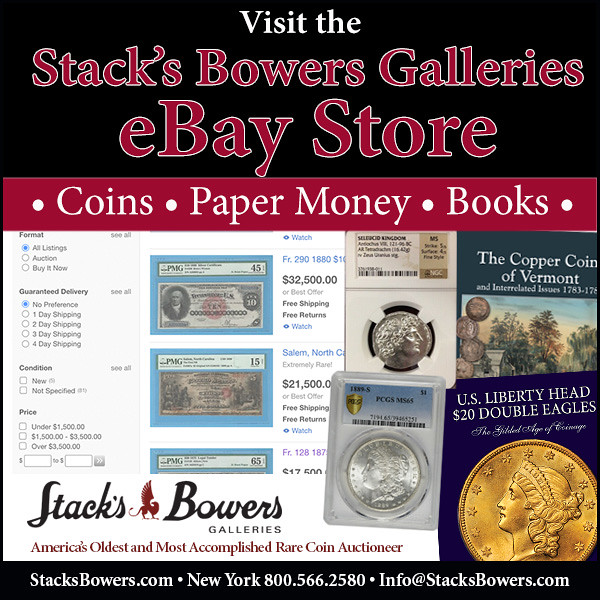
THE HISTORY OF THE FREEDMAN’S BANK
A publication of the University of Chicago Booth School of Business looks at the history of The Freedman’s Bank -Editor
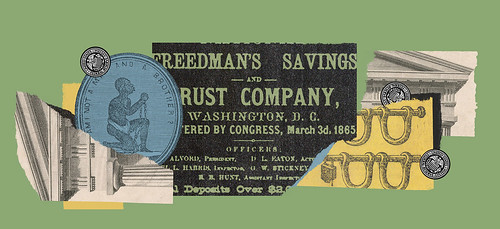
Some of the research into the Freedman’s Bank stems from a visit by Chicago Booth’s Constantine Yannelis to the US Treasury in fall 2018. Due to a temporary security issue, the main entrance was closed, and Yannelis was routed to exit the building via an annex that two years earlier had been renamed “The Freedman’s Bank Building.” Having never heard of the bank, Yannelis looked it up.
The first Freedman’s Bank opened on April 4, 1865. As University of California at Irvine’s Mehrsa Baradaran explains in her 2017 book The Color of Money: Black Banks and the Racial Wealth Gap, the government originally proposed distributing land to people who had been enslaved, but faced a violent backlash from Southern whites. “Instead of land, freed slaves got rights that they could not use due to their economic and political status at the bottom rung of society. They also got a savings bank, which was another form of diversion that would be repeated in the next century,” Baradaran writes.
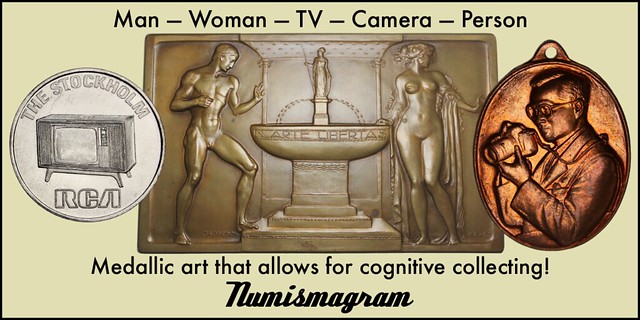
VOCABULARY TERMS: MOLD, MOLDING
Dick Johnson submitted this entry from his Encyclopedia of Coin and Medal Terminology. Thanks. Elsewhere in this issue is an article on this topic at Colonial Williamsburg. -Editor
Mold, Molding. The matrix containing the cavities to form a cast piece, and the process of producing that piece. The material to form the casting must be molten, the mold must be capable of sustaining heat and holding the form until the molten material solidifies. There are several kinds of molds, they differ in what they are made of and what they produce. Also molds can be used for only a single cast, these differ from production run casting, where a permanent mold is made often of two or more metal parts for repeated use. The use of molds for medallic production is rather limited, many types of molds have little concern to this field.
Types of molds. Molds can be made of a variety of material – called the investment – these can be metal, ceramic, rubber, plaster, epoxy, gelatin, silicone, and, or other. Since numismatic items are concerned with sharp, fine, minute detail, several of these investments, like sand, are not suitable for casting of numismatic or medallic items.
RIGHT REVEREND EDMOND MARIE OBRECHT (1852-1935)
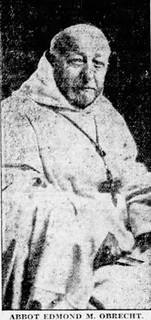 Right Reverend Edmond Marie Obrecht (1852-1935), was born on November 13, 1852, Stotsheim, Bas Rhin, Department of France, (now Alsace), son of Nicholas Obrecht (1829-1842), and Auguste Dorothea Sophie Matthies (1826-).
Right Reverend Edmond Marie Obrecht (1852-1935), was born on November 13, 1852, Stotsheim, Bas Rhin, Department of France, (now Alsace), son of Nicholas Obrecht (1829-1842), and Auguste Dorothea Sophie Matthies (1826-).
From 1869-1870, he served in the French army during the Franco-Prussian War.
In 1871, he studied for the priesthood in the Seminary at Sees, France.
In 1876, he made his final vows at the Monastery of the Three Fountains, Rome.
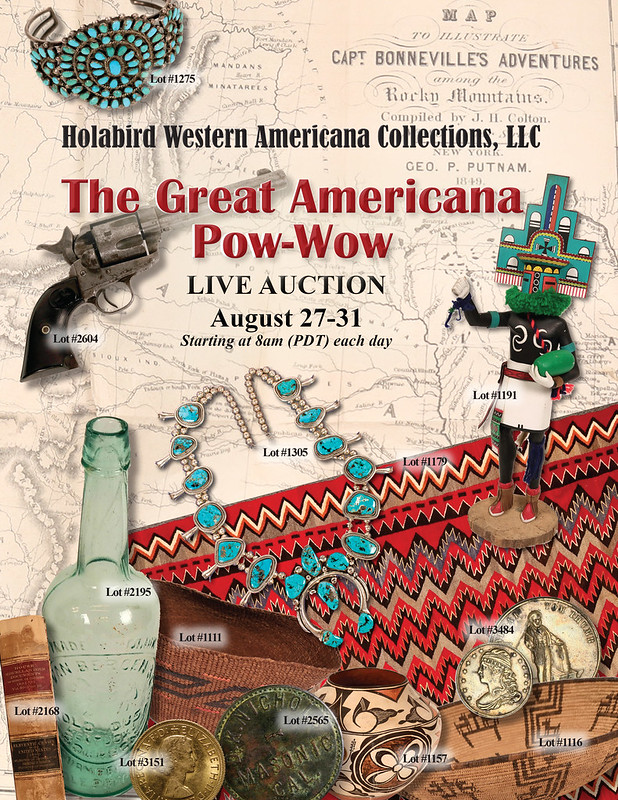
GEORGE BUSH COIN DESIGNER ELANA HAGLER
An Alabama State University assistant professor designed the new George H.W. Bush Presidential dollar coin. -Editor
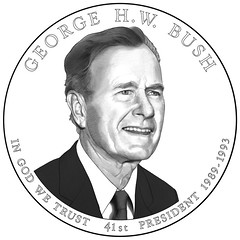 An assistant professor at Alabama State University can now add ‘coin designer’ to her list of accolades! Elana Hagler’s design for the George H.W. Bush Presidential $1 coin was recently selected by the United States Mint.
An assistant professor at Alabama State University can now add ‘coin designer’ to her list of accolades! Elana Hagler’s design for the George H.W. Bush Presidential $1 coin was recently selected by the United States Mint.
The coin features the late president’s smiling portrait with the inscriptions “George H.W. Bush” above his head and “In God We Trust,” “41st President,” and “1989-1993” at the bottom.
On the reverse side of the coin, a rendition of the Statue of Liberty is featured.
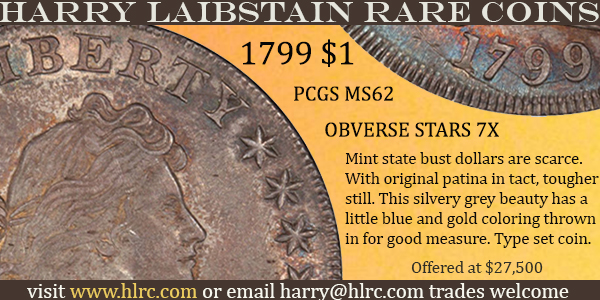
ANCIENT COINS IN EARLY AMERICAN AUCTIONS
We have a number of ancient coin sales coming up. Readers might be interested in David Fanning's upcoming talk at the Newman Numismatic Portal Symposium on Ancient Coins in Early American Auctions. It's on Saturday, August 29 at 10:00AM EDT. -Editor
DAVISSON'S E-AUCTION 36 ANCIENTS
Marnie & Lief Davisson reviewed some of the ancient coins in their upcoming E-Auction 36 in an email to clients this week. Here's an excerpt. -Editor
Our Ancient Greek section includes lots from a broad span–Spain, Italy, Sicily, Greece, Asia Minor–a few particularly special pieces are below:
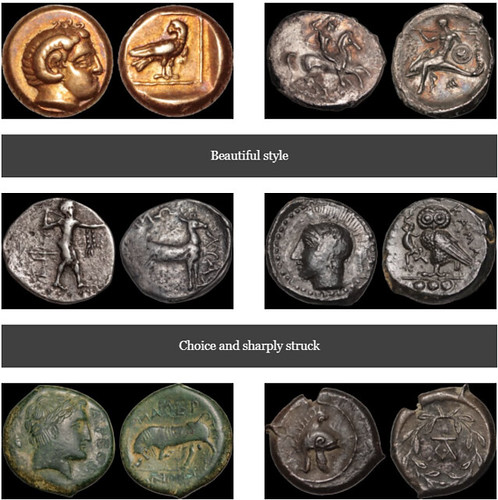
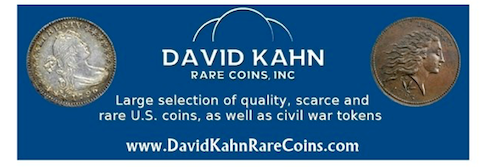
ROBINSON ANCIENT COIN SALE 113 SELECTIONS
Here are a few items that caught my eye in Frank Robinson's Auction 113 closing September 1. 2020. Note that there is no buyer's fee. -Editor
Lot 1: ABDERA, Tetrobol
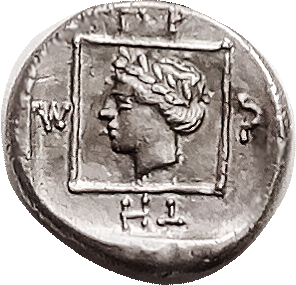
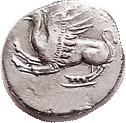
ABDERA, Tetrobol, 415-395 BC, Griffin springing left/ Dionysos head l in square, Magistrate Protes, sim S1549 (£200); EF, obv sl off-ctr crowding Griffin's head, rev nrly centered & complete, head quite sharp; good metal with lt tone. (A GVF of the type, brought $1034, Roma 2/14.) Starting Bid $250
Unusual boxed portrait. -Editor
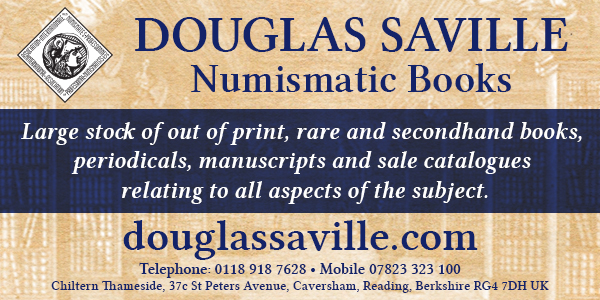
CLASSICAL NUMISMATIC GROUP SALE 115 ANNOUNCED
For even more ancient coins to consider, here's the press release for the CNG fall sale closing September 16-17, 2020. Some great coins here. -Editor
A Live Online Sale
Closing Wednesday & Thursday, 16-17 September 2020
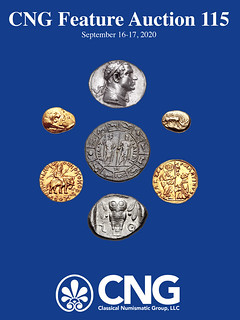 Classical Numismatic Group, LLC is proud to present CNG Feature Auction 115, a Live Online Sale closing Wednesday & Thursday, 16-17 September 2020, from our Lancaster, Pennsylvania office. This sale offers 1235 lots with a presale estimate of $1.83 million.
Classical Numismatic Group, LLC is proud to present CNG Feature Auction 115, a Live Online Sale closing Wednesday & Thursday, 16-17 September 2020, from our Lancaster, Pennsylvania office. This sale offers 1235 lots with a presale estimate of $1.83 million.
Our annual fall sale features Greek, Celtic, Oriental Greek, Central Asian, Roman Provincial, Roman Republican and Imperatorial, Roman Imperial coinage, and Romano-Byzantine Weights. Additionally, there are featured selections of Byzantine, Early Medieval and Islamic, World coinage and medals, British coinage and medals, Electrotypes & Reproductions, and Antiquities.
CNG 115 is highlighted by a number of collections and individual rarities, which make up the majority of coins on offer:
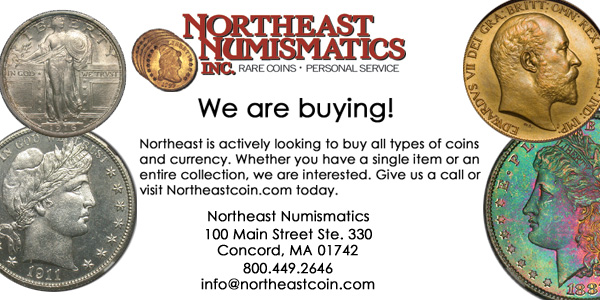
MORE HOLABIRD AUGUST 2020 SALE SELECTIONS
Here are some additional items that caught my eye in the upcoming August 2020 Great Americana Pow-Wow Auction from Holabird Americana. -Editor
Lot 3260: Carnival & Peace Jubilee So Called Dime (121370)
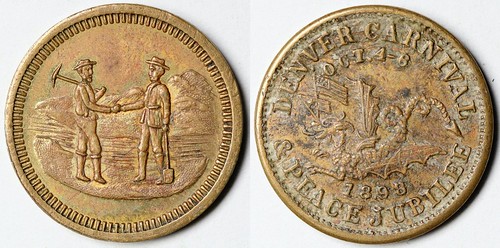
Obv.: Denver Carnival / Oct. 4-6 / 1898 / & Peace Jubilee; Rev.: pictorial two miners. Br., rd., 18 mm.
Date: 1898
State: Colorado
City: Denver
Provenance: Benjamin Fauver Collection
See the article by Paul Williams elsewhere in this issue about the "So-Called Dimes" in the Fauver collection. -Editor
To read the complete lot description, see:
Carnival & Peace Jubilee So Called Dime (121370)
(https://holabirdamericana.liveauctiongroup.com/Carnival-Peace-Jubilee-So-Called-Dime-121370_i38149288)
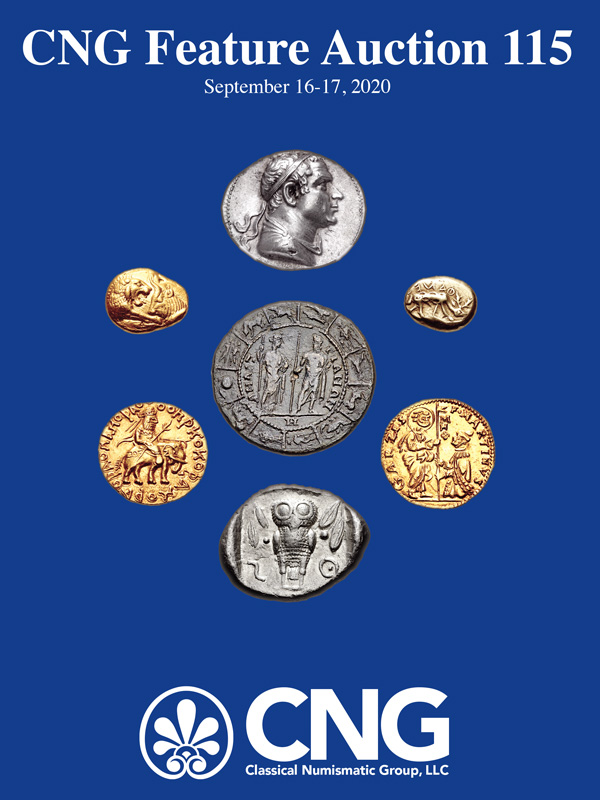
NUMISMATIC NUGGETS: AUGUST 23, 2020
Here's a selection of interesting or unusual items I came across in the marketplace this week. Tell us what you think of some of these. -Editor
1839 Adam Eckfeldt Retirement Medal
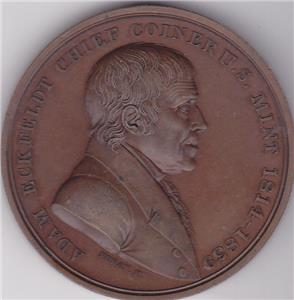
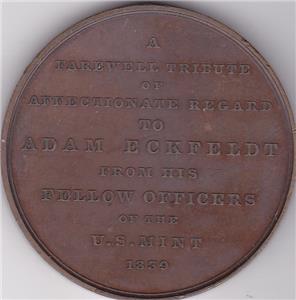
1839 Adam Eckfeldt Retirement Medal MT-18 CHIEF COINER U.S. MINT This auction is for a 1839 Adam Eckfeldt Retirement Medal MT-18 CHIEF COINER U.S. MINT Mortiz Furst, The obverse bears Eckfeldt's bust facing right, ADAM ECKFELDT CHIEF COINER U.S. MINT 1814-1839 around
"Adam Eckfeldt was born in 1769 and entered the mint service in 1792. In 1814 he was appointed chief coiner, a post he held for 25 years. Even after his official retirement, Eckfeldt continued coming to the mint daily and actually superintended the coining department for his successor, Franklin Peale. He died in 1852." Source - coinbooks & Katie Jaeger
Nice medal for a great numismatic personality well known to bibliophiles. -Editor
To read the complete lot description, see:
1839 Adam Eckfeldt Retirement Medal MT-18 CHIEF COINER U.S. MINT
(https://www.ebay.com/itm/124306447830)
Other topics this week include a gorgeous 1864 Seated Quarter and a Proof Washington quarter error. -Editor
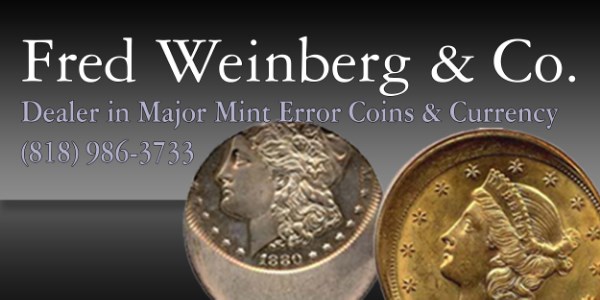
COIN CASTING AT COLONIAL WILLIAMSBURG
The Summer 2020 issue of the C4 Newsletter from the Colonial Coin Collectors Club featured an article by Jeff Rock about coin casting at Colonial Williamsburg. With permission, we're publishing an excerpt here. Thanks to Jeff and editor Will Nipper for making the text and images available. -Editor
By Jeff Rock
In the Winter, 2017 issue of C4N, I wrote about a trip to Colonial Williamsburg and urged readers who haven’t gone to make time for a visit. I was set for a repeat visit in March of this year, after the Baltimore coin show – but a virus had other ideas, closing that show and Williamsburg too. There are always silver linings though, and since I couldn’t go for an actual visit, I looked at some photos of my trip and reread the article I wrote. Imagine my surprise when I found I had promised a second article – which I had promptly forgot about when something shiny diverted my attention. Squirrel! So, a few years late, here is the promised follow-up article, dealing with the numismatic items actually made at Colonial Williamsburg, at a working foundry that uses only period-appropriate tools and methods of production. To save readers from hunting through their back issues, allow me to reprint my introduction to the foundry, built behind the James Geddy house in that city:
THE HEATON MINT SERIES OF CHINESE COINS
Stack's Bowers Senior Numismatist and Cataloger Jeremy Bostwick published a blog article last week on the Heaton Mint Series of Chinese coins. -Editor
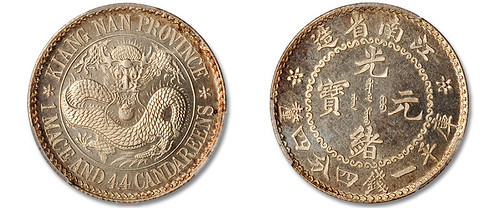
Late in the 19th century, China began to modernize their coining system, moving away from the cast "cash" coinage that had been standard for over two millennia, and toward a denominated rubric more in line with the western world. Various provincial mints began striking the "7 mace 2 candareens" denomination—corresponding to the Mexican 8 reales, American dollar and other similar crown sized silver issues—along with its respective minors. Copper issues were also produced, but often featured designs akin to their silver counterparts instead of those with central holes that had been used on the longstanding cast coinage. Though many of these "new style" coins were struck with locally produced dies, the mint in Nanking (within Kiangsu province) specially commissioned Ralph Heaton's mint in Birmingham, England in 1897 to produce the dies for a set of silver denominations. As the province wanted to denote these differently than their copper issues struck, the regional name of "Kiangnan," no longer extant as an official province, was utilized for the silver set.
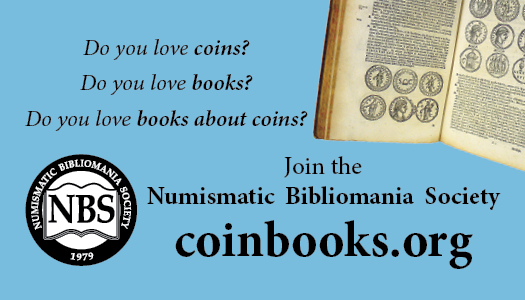
THE HISTORY OF HOBO NICKELS
Ed Krivoniak forwarded this article on the history of Hobo Nickels. Thanks. -Editor
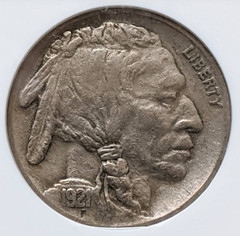
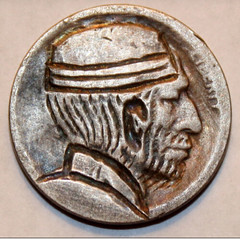
The first altered coins date back to the 18th century in Britain, France, and South Africa, where people engraved “love tokens” into silver. These metal emblems (usually etched with initials or names) were given as gifts and often incorporated into jewelry.
When the Buffalo nickel was introduced in 1913, it became the most popular surface for coin engravers in the U.S. While previous coins featured small heads (a Lincoln cent, for example, had a head covering about one-sixth of the area), the Buffalo nickel had a Native American's head that occupies about five-sixths of the coin’s surface.
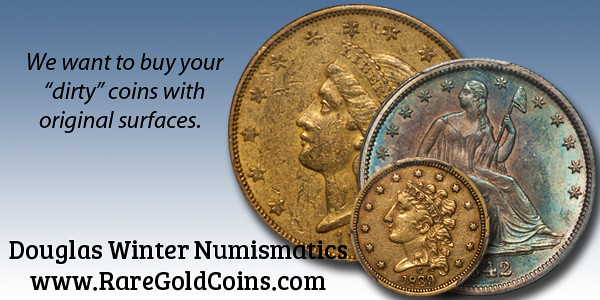
DO WE CALL THEM SO-CALLED DIMES?
Here's an interesting article by Paul Williams inspired by part of the collection of author Benjamin Fauver, which is being sold by Holabird Americana. Here's an except - see the complete article online. -Editor
Dime Sized Counters or Small Tokens?
by Paul Williams
 The So-Called Dollar term was invented because the
medals defined by it are all the size of the most popular
US coin of all time- the Silver Dollar. The unintended
consequence of a popular coin is that other similar
metal pieces will follow of the same size. Why not? Its
everybody’s favorite.
The So-Called Dollar term was invented because the
medals defined by it are all the size of the most popular
US coin of all time- the Silver Dollar. The unintended
consequence of a popular coin is that other similar
metal pieces will follow of the same size. Why not? Its
everybody’s favorite.
Benjamin Fauver had a box in his collection labeled “So-Called Dimes.” In it were a series of dime sized tokens that fit the definition of the “So-Called” part of “So-Called Dollars.” The tokens are all exposition commemorative pieces, but all dime (18mm) sized. But So-Called Dimes? The humble dime is in our culture: “Somebody Loan Me A Dime,” a “dime-a-dozen”. “Brother, Can You Spare a Dime?” is one of the best known songs from the Great Depression.
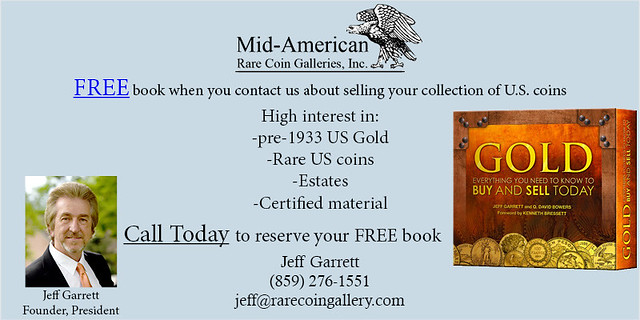
AN ESSAY ON GAMING COUNTERS
And here's another interesting article inspired by the impressive Ben Fauver collection being auctioned by Holabird Americana: a 16-page essay by Fred Holabird on Gaming Counters. Here's an except - see the complete article online. -Editor
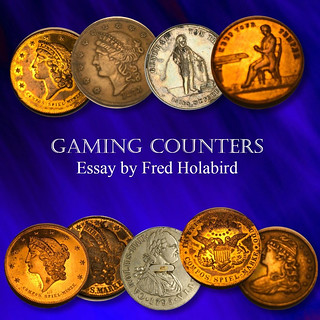 Abstract
Abstract
Gaming counters are the historical precedent to today’s
gaming chips and tokens widely used in Casinos around the
world. In use since the 1200s, the genre has changed with
time and cultures. The study of American counters was undertaken by numismatist Benjamin Fauver who published
nine books on the subject. Fauver’s personal collection
provides an important window into the study of the manufacture, distribution and use of many of these counters.
American counters come in many forms from many different die sinkers from several different countries over a wide span in time. Their use was ostensibly for a variety of card games, which may have begun with Whist, a form of Bridge as we know it today. Originally a western European game, it worked its way into America but was never as popular as it was in Europe. Instead, forms of poker took over, still prevalent today.

UTAH'S GOLDBACK ALTERNATIVE CURRENCY
Remember when Utah passed a Legal Tender act allowing gold currency? Here's one produce developed under its provisions: the "Goldback" alternative currency. -Editor
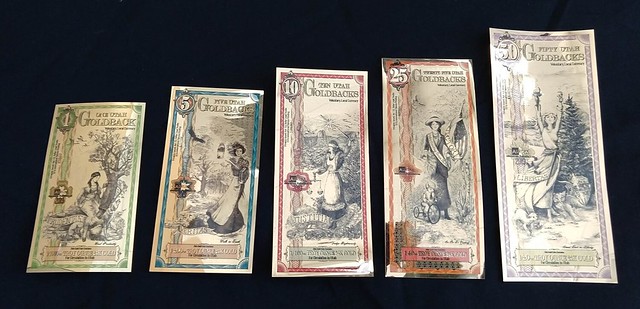
The Utah series was the first Goldback series available in 2019. Nevada and New Hampshire are scheduled to be done in 2020. There are many projects in the works. Goldbacks may be used anywhere people chose to accept gold.
The Goldback is the world’s first voluntary, complementary currency to be made of a spendable, beautiful, small denomination, physical gold.
The Goldback project truly began in spirit with the passage of the Utah Legal Tender Act in 2011 which recognized certain types of Gold as currency within the state. Since that time the technology to mint gold into a spendable form for small transactions has come to fruition. Goldbacks may be used almost anywhere in the world for barter transactions. Goldback Inc. is using cutting edge vacuum deposition technology to circulate gold as it never has before.
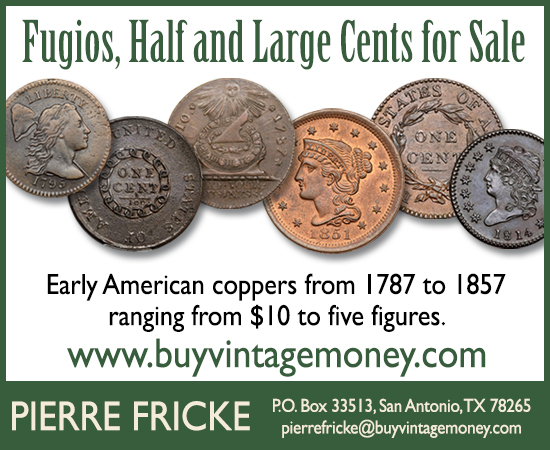
LOOSE CHANGE: AUGUST 23, 2020
Here are some additional items in the media this week that may be of interest. -Editor
Ancient Myths on Roman Coins
I missed this when it was published on August 4, 2020 - Elena Stolyarik of the ANS wrote about ancient myths on Roman Coins. -Editor
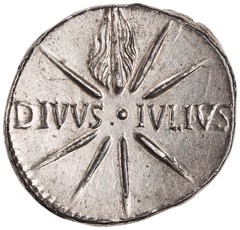 Many coins at the American Numismatic Society illustrate human interpretations of the universe and religious beliefs regarding human destiny. Among these are various samples from the ANS Roman collection having mythical and mythological themes.
Many coins at the American Numismatic Society illustrate human interpretations of the universe and religious beliefs regarding human destiny. Among these are various samples from the ANS Roman collection having mythical and mythological themes.
One of the great illustrations of astral imagery from the Early Roman Empire, strongly connected with Julius Caesar’s heritage, is found on a silver denarius of Augustus struck circa 19–18 BC. This coin has the Emperor’s image on the obverse and the famous Caesar’s Comet on the reverse (fig. 1). The comet, which appeared some four months after assassination of Julius Caesar, was interpreted by the Romans as a sign of his deification and became a powerful symbol in the political propaganda of Augustus, Caesar’s great-nephew and adoptive son.
To read the complete article, see:
ANCIENT MYTHS ON ROMAN COINS AT THE ANS
(http://numismatics.org/pocketchange/romanmyths/)
Other topics this week include George Floyd's $20 bill, giant gold nuggets found in Australia, a centuries-old attic find, the Lost Colony of Roanoke, and dealer Tom Noe's upcoming marriage. -Editor
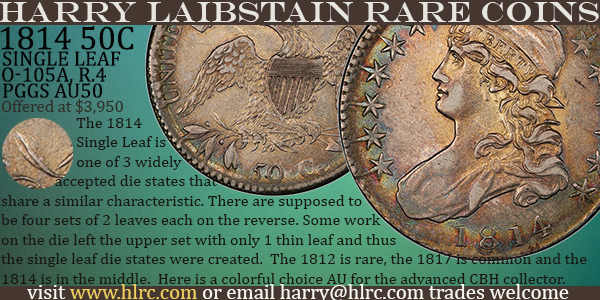
MR. SQUIRREL'S TIME-TRAVELING COIN ENVELOPES
Great Yarmouth is a seaside resort town in Norfolk, England. This article recounts the odd Twilight Zone story of a coin collector's shopping experience. -Editor
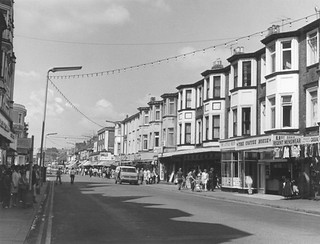 Can we really slip into another time zone as easily as we’d walk from one room to the next? The curious case of the Great Yarmouth shop with a ghostly assistant.
Can we really slip into another time zone as easily as we’d walk from one room to the next? The curious case of the Great Yarmouth shop with a ghostly assistant.
It was when he approached the till that he noticed the shop was strangely old-fashioned: despite it being 1973, the lady behind the desk was in Edwardian dress. The wonderfully-named Mr Squirrel had, according to an account in Norfolk author Joan Forman’s book The Mask of Time, popped into a Great Yarmouth shop after a recommendation from a friend. This story is from sources which quote from Ms Forman’s book, Legends and Things That Go Bump in the Night by S John Saunders and Norfolk Stories of the Supernatural by Betty Puttick.
THE BOOK BAZARRE
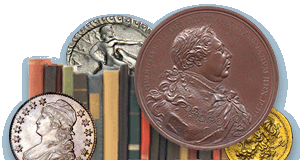
The E-Sylum is an electronic publication of the Numismatic Bibliomania Society
Copyright © 1998 - 2025
